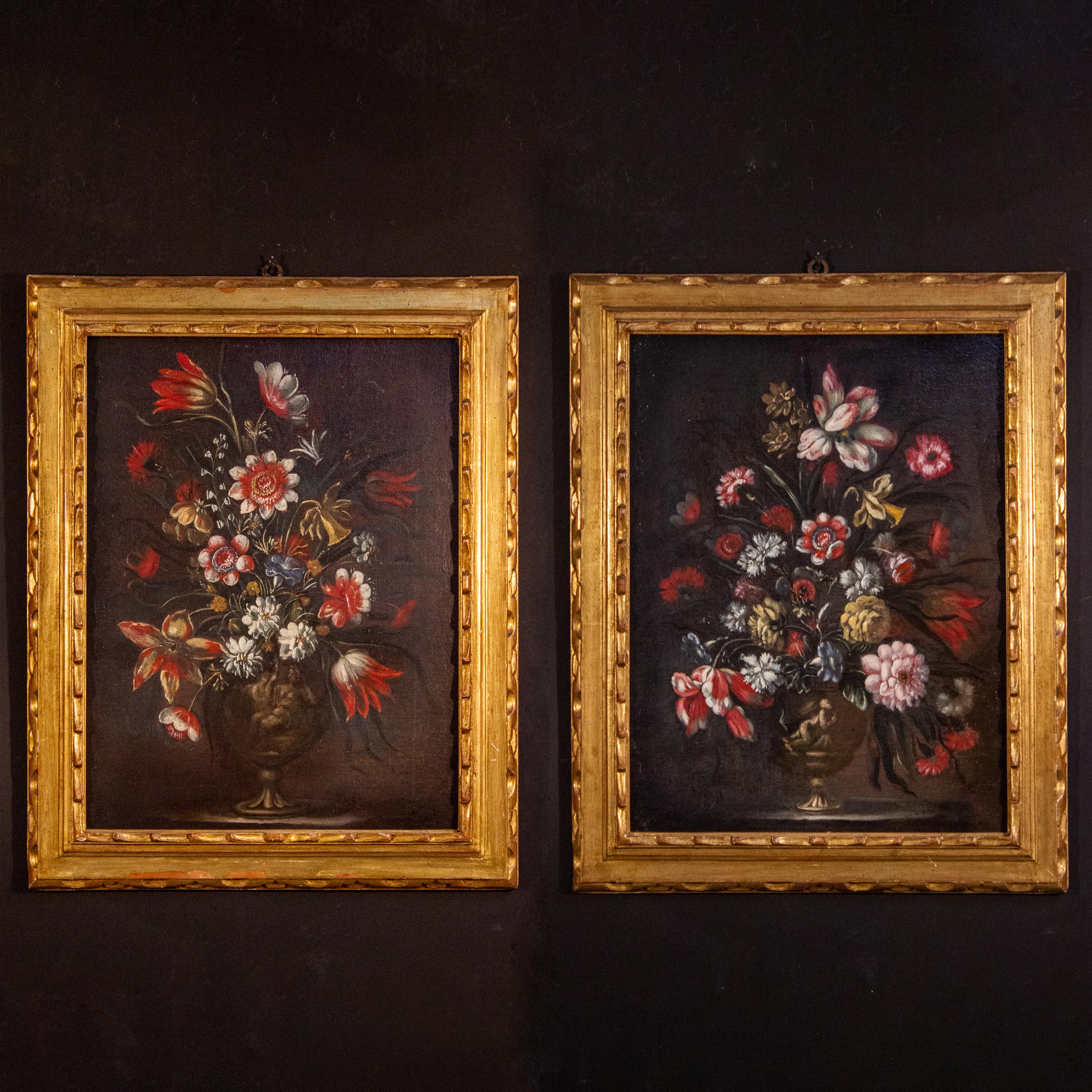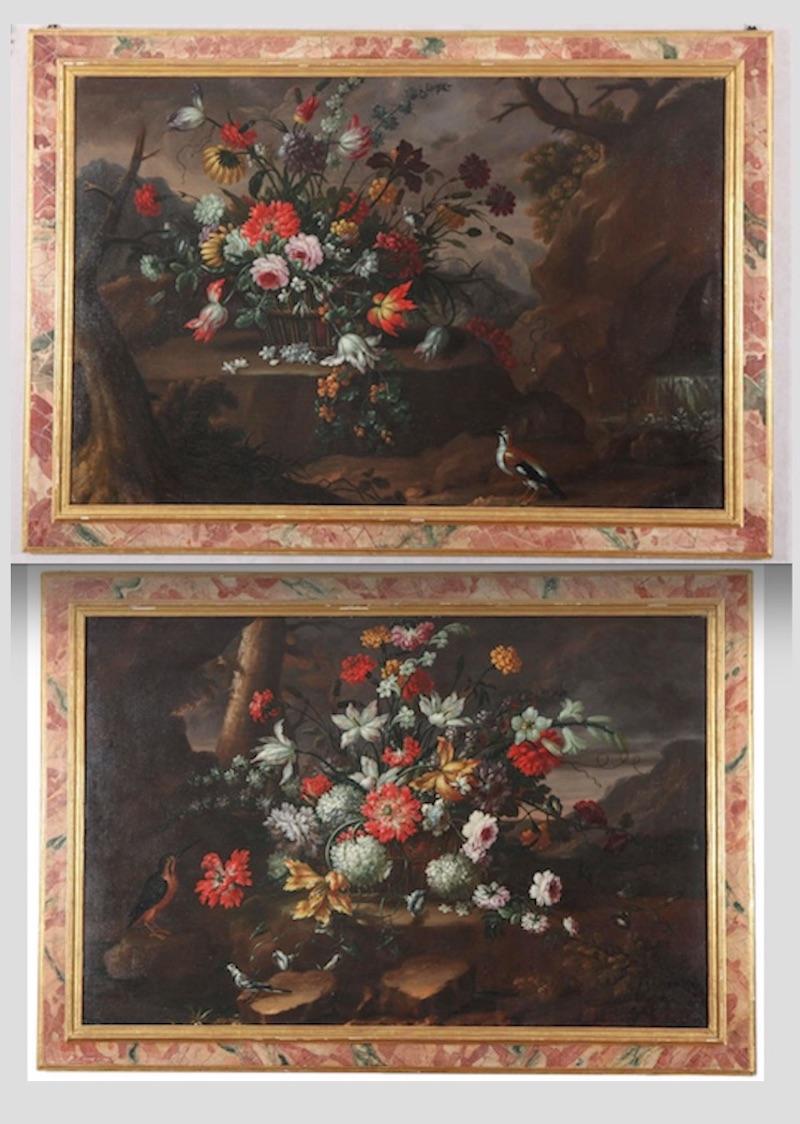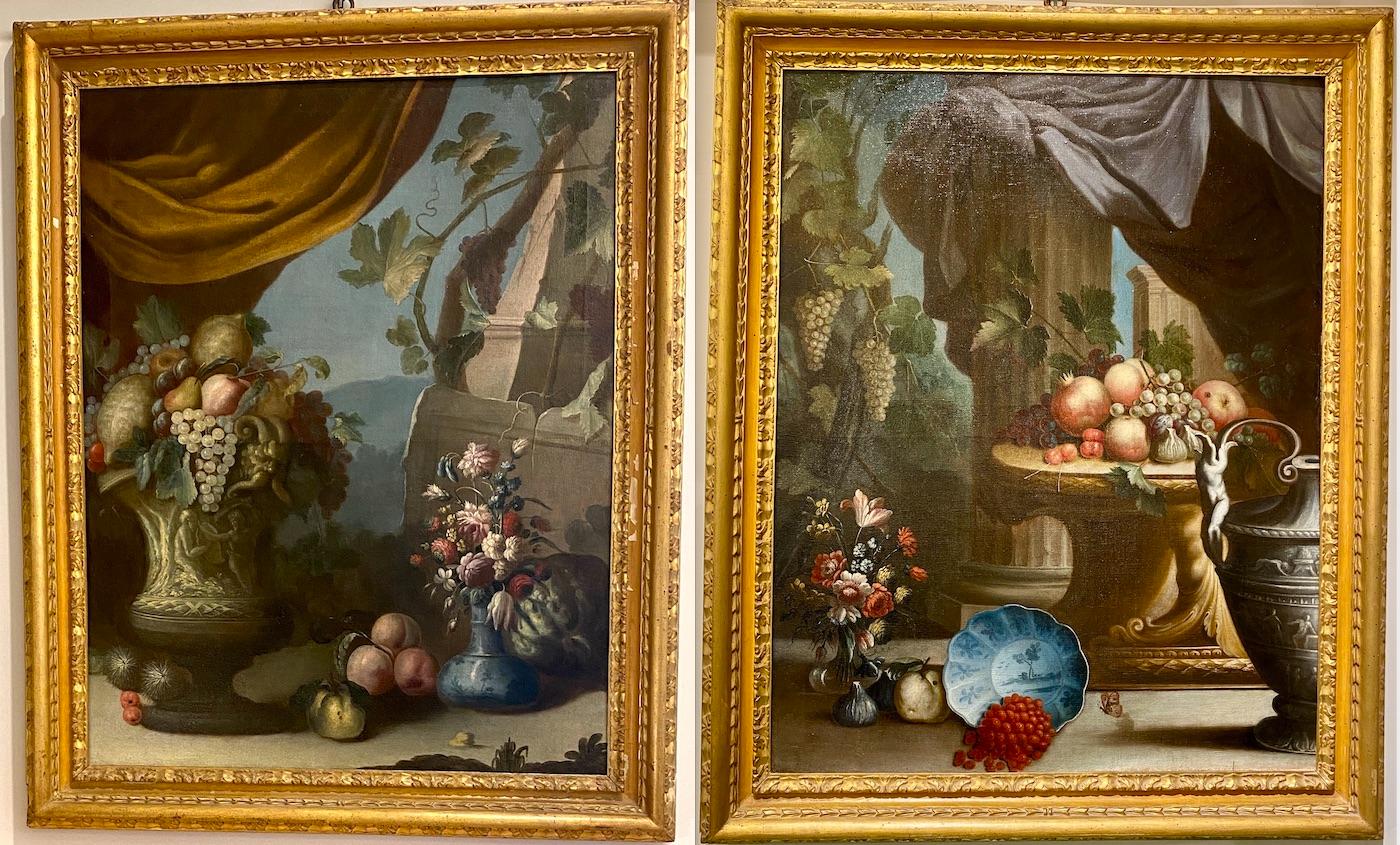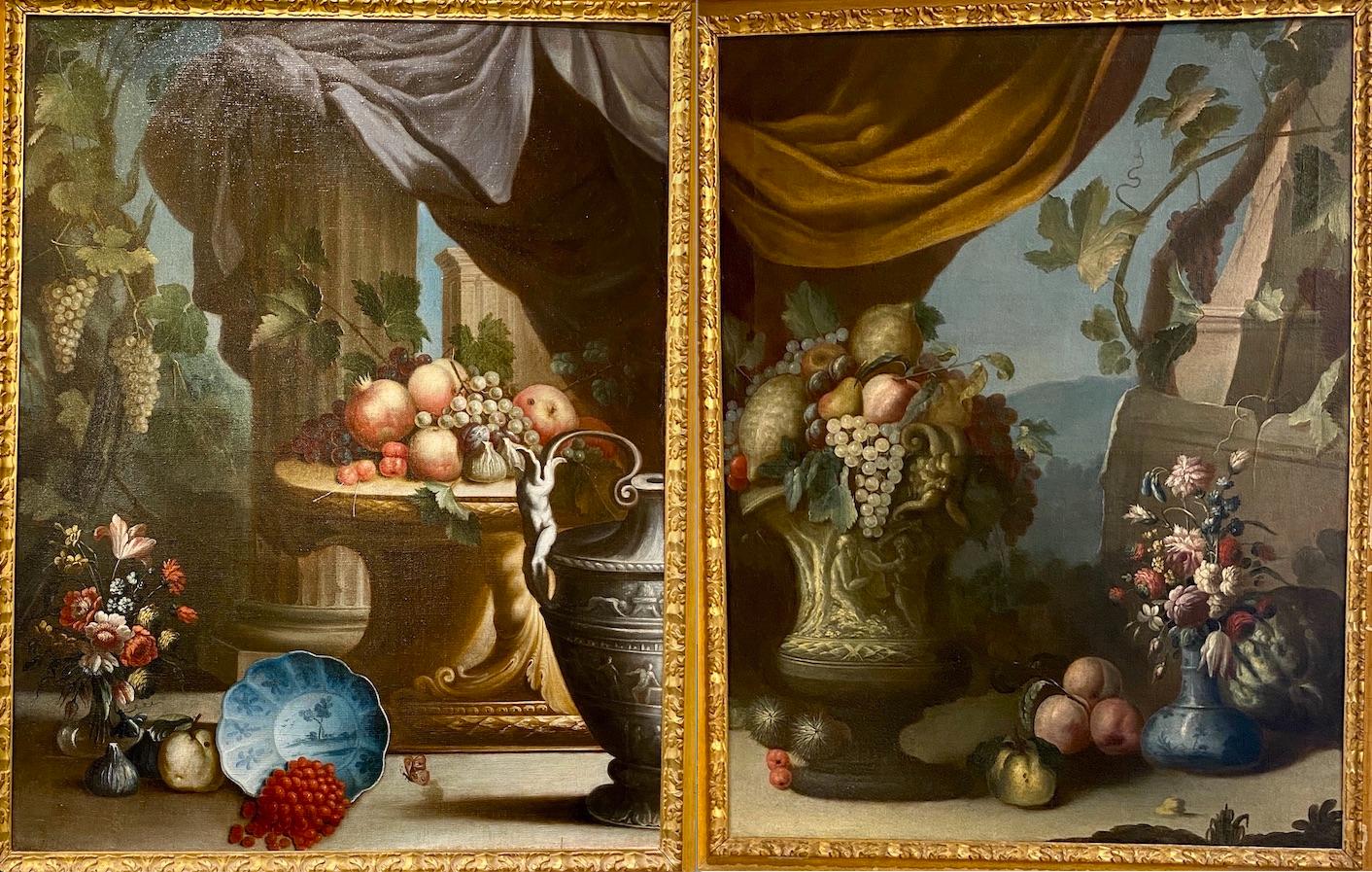Items Similar to 1950s French Post Impressionist Watercolor Painting Pink Chrysanthemum Flowers
Want more images or videos?
Request additional images or videos from the seller
1 of 7
Josine Vignon1950s French Post Impressionist Watercolor Painting Pink Chrysanthemum Flowers1950s
1950s
About the Item
Josine Vignon (French 1922-2022)
stamped verso thick oil impasto watercolor painting on artist paper, unframed
14 x 11 inches
Very good condition.
Provenance: from the artists estate, France
Josine Vignon (1922-2022) was a French artist living on the Rue Beautreillis in the Marais district of Paris. She painted with a beautiful style, largely influenced by the Impressionist and Post Impressionist techniques, but adding her own distinctive style and technique to each painting. Vignon''s works carry tremendous energy and enthusiasm, often painted with very thick impasto oil creating a rich and diverse texture, as well as painting with a tremendous palette range of vibrant and joyful colours. She captured her home city of Paris, as well as Provence and the beauty of the surrounding countryside. We consider her one of the most talented and significant ''undiscovered'' artists of her time.
- Creator:Josine Vignon (1922 - 2022, French)
- Creation Year:1950s
- Dimensions:Height: 14 in (35.56 cm)Width: 11 in (27.94 cm)Depth: 1 in (2.54 cm)
- Period:
- Condition:
- Gallery Location:Cirencester, GB
- Reference Number:1stDibs: LU509312711412

About the Seller
5.0
Platinum Seller
These expertly vetted sellers are 1stDibs' most experienced sellers and are rated highest by our customers.
Established in 1989
1stDibs seller since 2016
3,450 sales on 1stDibs
Typical response time: 2 hours
- ShippingRetrieving quote...Ships From: Cirencester, United Kingdom
- Return PolicyA return for this item may be initiated within 3 days of delivery.
More From This SellerView All
- French Cubist Still Life Signed Painting Fruit & Wine on Table, 20th centuryLocated in Cirencester, GloucestershireArtist/ School: Robert Roujas (French, 1908 - 2000), signed Title: Still Life with Apples painted in the Cubist style. Medium: oil on board, unframed Painting: 18 x 21.5 inches ...Category
Late 20th Century Cubist Abstract Paintings
MaterialsOil
- Mid Century French Still Life Flowers Pink Red & White Flowers in Glass VaseLocated in Cirencester, GloucestershireArtist/ School: French School, mid 20th century, signed and inscribed verso Title: Still life of pink, white and red flowers in a glass vase. Painted with delightful texture and thi...Category
Mid-20th Century Post-Impressionist Still-life Paintings
MaterialsOil
- 1950's Modernist/ Cubist Painting - Wild Plants In Plant BowlBy Bernard LabbeLocated in Cirencester, GloucestershirePlant Pot by Bernard Labbe (French mid 20th century) original gouache on artist paper size: 12.5 x 19.5 inches condition: very good and ready to be enjo...Category
Mid-20th Century Modern Still-life Paintings
MaterialsGouache
- 1940's French Modernist Signed Oil Pears & Flowers, Monte Carlo show exhibitedLocated in Cirencester, GloucestershireArtist/ School: French School, indistinctly signed, circa 1944 Title: Flowers and Fruit, remnants of old label verso Medium: oil on canvas, unframed Painting: 24 x 20 inches Prov...Category
Mid-20th Century Post-Impressionist Still-life Paintings
MaterialsOil, Canvas
- Large 1950's French Signed Oil Apple Orchard Rural Field Very Thick OilLocated in Cirencester, GloucestershireArtist/ School: Marie Louise Eber (French mid 20th century), signed lower front, dated 1958 verso. Title: "La Serenite", a beautiful Post-Impressionist m...Category
Mid-20th Century Post-Impressionist Landscape Paintings
MaterialsOil, Canvas
- Dreamy French Impressionist View from Window over Green Garden Landscape oilLocated in Cirencester, GloucestershireArtist/ School: French Impressionist early 1900's, most likely an unfinished sketch hence not signed. Title: Dreamy garden view, looking out of the window over a deep green and vib...Category
Early 20th Century Impressionist Landscape Paintings
MaterialsOil, Canvas
You May Also Like
- Pair of 18th century Italian Still Life Paintings of FlowersLocated in Rome, ITPair of very decorative Italian Still-life paintings of flowers with vases and classical figures . 18th century, oil on canvas, with original gilt-wood frames. This pair is an exce...Category
18th Century Baroque Still-life Paintings
MaterialsOil
- Still Life with Squash, Gourds, Stoneware, and a Basket with Fruit and CheeseLocated in New York, NYProvenance: Selma Herringman, New York, ca. 1955-2013; thence by descent to: Private Collection, New York, 2013-2020 This seventeenth century Spanish still-life of a laden table, known as a bodegón, stands out for its dramatic lighting and for the detailed description of each object. The artist’s confident use of chiaroscuro enables the sliced-open squash in the left foreground to appear as if emerging out of the darkness and projecting towards the viewer. The light source emanates from the upper left, illuminating the array, and its strength is made apparent by the reflections on the pitcher, pot, and the fruit in the basket. Visible brush strokes accentuate the vegetables’ rough surfaces and delicate interiors. Although the painter of this striking work remains unknown, it is a characteristic example of the pioneering Spanish still-lifes of the baroque period, which brought inanimate objects alive on canvas. In our painting, the knife and the large yellow squash boldly protrude off the table. Balancing objects on the edge of a table was a clever way for still-life painters to emphasize the three-dimensionality of the objects depicted, as well a way to lend a sense of drama to an otherwise static image. The knife here teeters on the edge, appearing as if it might fall off the table and out of the painting at any moment. The shape and consistency of the squash at left is brilliantly conveyed through the light brush strokes that define the vegetable’s fleshy and feathery interior. The smaller gourds—gathered together in a pile—are shrouded partly in darkness and stand out for their rugged, bumpy exterior. The stoneware has a brassy glaze, and the earthy tones of the vessels are carefully modulated by their interaction with the light and shadow that falls across them. The artist has cleverly arranged the still-life in a V-shaped composition, with a triangular slice of cheese standing upright, serving as its pinnacle. Independent still-lifes only became an important pictorial genre in the first years of the seventeenth century. In Italy, and particularly through the revolutionary works of Caravaggio, painted objects became carriers of meaning, and their depiction and arrangement the province of serious artistic scrutiny. Caravaggio famously asserted that it was equally difficult to paint a still-life as it was to paint figures, and the elevation of this new art form would have profound consequences to the present day. In Spain Juan Sanchez Cotan...Category
17th Century Old Masters Still-life Paintings
MaterialsCanvas, Oil
- Pair of Exceptional Italian Still Life Paintings of Flowers 18th centuryBy Anna Caterina GilliLocated in Rome, IT- ANNA CATERINA GILLI or GILLI Anna Caterina Turin 1729- 1751 Her paintings recorded in Turin as a decorative artist for the Royal Palace and the Stupinigi, working in a simil...Category
Mid-18th Century Baroque Still-life Paintings
MaterialsOil
- Pair of Exceptional Italian 18th Century Still-Life PaintingsLocated in Rome, ITThis pair of excellent Italian still life oil on canvas with flowers and fruit with classical ruins on the background and colored drapes create harmony of the composition. Notable ...Category
Early 18th Century Old Masters Still-life Paintings
MaterialsOil
- Pair of 18th century Italian Still Life Paintings of FlowersLocated in Rome, ITPair of very decorative Italian Still-life paintings of flowers with vases and classical figures . 18th century, oil on canvas, with original gilt-wood frames. This pair is an exce...Category
18th Century Baroque Still-life Paintings
MaterialsOil
- Pair of Exceptional Italian 18th Century Still-Life PaintingsLocated in Rome, ITThis pair of excellent Italian still life oil on canvas with flowers and fruit with classical ruins on the background and colored drapes create harmony of the composition. Notable ...Category
Early 18th Century Old Masters Still-life Paintings
MaterialsOil
Recently Viewed
View AllMore Ways To Browse
Mid Century Cubist Still Life
Scott Mo
Grand Prospect Hall
Vintage Floral Oil Painting White
One Quince
Murky Glass
Congress Playing Cards
Mary Kay West
David Head Planter
Vintage Nova Watch
Lo Spadino
Thomas R Dunlay
Til Japan
Vintage Oil Painting Still Life
Plum Oil Painting
Portraits Made On Steel
Dutch School Floral Painting
Joseph O Sickey





